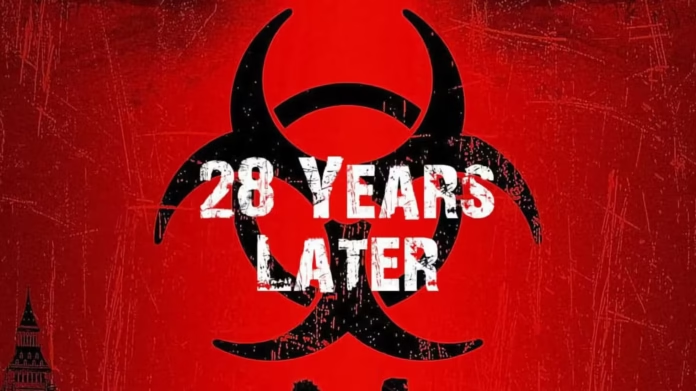A thrilling, thoughtful, and genre-bending return to form that elevates the franchise to new, profound heights.
-
Direction & Cinematography
-
Sound / Music
-
Story line
-
VFX
Summary
A thrilling, thoughtful, and genre-bending return to form that elevates the franchise to new, profound heights.
A Savage Reckoning with a Human Heart and a Bleak World
The opening shot of a single, bloodied shoe, lost in a landscape of desolation, is all it takes to pull us back into the world of the rage-infected. 28 Years Later isn’t just a sequel; it’s a full-throated roar that reminds us why the original films left such a lasting mark. This is a movie that bites down hard and refuses to let go, but in its bite, it finds a soul. It’s a testament to the fact that creators Danny Boyle and Alex Garland, having laid the groundwork in 2002, are still committed to exploring the darkest corners of humanity within their own grim universe.
Director Danny Boyle, returning to the helm after only executive producing 28 Weeks Later, and screenwriter Alex Garland, who wrote the original, don’t simply rehash the old tricks; they escalate the stakes. The film’s cinematic language immediately distinguishes itself. Boyle, famously shooting on iPhones, creates a gritty, almost voyeuristic feel. This raw, immediate visual style is a direct callback to the digital video look of the original 28 Days Later, which at the time felt revolutionary and raw. Here, it’s not just a stylistic choice but a thematic one, making the audience feel as if they are right in the thick of the chaos, experiencing the world from the ground up, much like the characters themselves.
The film’s most striking departure from its predecessors is its setting and tone. Where 28 Days Later was about the immediate shock of the collapse and 28 Weeks Later was a brutal, militaristic dissection of control, 28 Years Later is a piece of folk horror wrapped in a post-apocalyptic shell. We are introduced to a small, isolated community on the island of Lindisfarne, which has regressed into a semi-medieval existence, a haunting visual of “Brexit-related isolationism” as some have suggested. Their world is one of bows, arrows, and an unspoken, constant fear of what lurks just across the tidal causeway. This primitive-yet-peaceful existence is a fascinating contrast to the urban decay of London in the first two films.
In this fragile peace, a father, Jamie (Aaron Taylor-Johnson), takes his son, Spike (Alfie Williams), on a brutal coming-of-age journey to the mainland. It’s a rite of passage into a world of pure, unadulterated danger, and it’s here that the film sheds its skin and becomes a deeply personal story. This narrative focus on a small, emotional quest—to find a rumored doctor for Spike’s ailing mother, Isla (Jodie Comer)—elevates the film beyond a simple zombie flick. It’s a road movie in a dead world, evoking the bleak, emotional journeys of films like Alfonso Cuarón’s Children of Men or John Hillcoat’s The Road. The horror isn’t just in the sprinting infected but in the impossible decisions these characters must make to survive, and the emotional toll that takes.
The cast is uniformly excellent. Williams, in a remarkable debut performance, anchors the film with a wide-eyed innocence that is slowly, heartbreakingly, chipped away by his environment. Jodie Comer, in a departure from her more active roles, delivers a layered performance as his anxious mother, Isla, who is not infected by the rage but by a terminal illness—a poignant commentary on how the old world’s problems persist in the new one. The arrival of Ralph Fiennes as a philosophical shaman-like figure adds a captivating layer of cerebral horror. His character, Dr. Kelson, forces us to confront concepts like memento mori (“remember you must die”), turning a horror movie into a profound meditation on life and death.
The film also brilliantly evolves the nature of the infected themselves. We see a new hierarchy and mutation in the virus, with slow-crawling “slow-lows” and a terrifying, intelligent “Alpha” zombie that leads its pack. This biological progression feels organic and horrifying, a logical next step in the franchise’s world-building. While 28 Weeks Later was often criticized for its human-on-human brutality being more shocking than the infected, 28 Years Later strikes a careful balance. The human malice is there, but it’s the sheer, raw terror of the evolved infected that takes center stage.
Some might find the film’s tonal shifts jarring, but they are a testament to its ambition. It’s a horror film, yes, but it’s also a deeply affecting meditation on legacy, survival, and the primal bonds of family. While the final act might feel a little unwieldy in its introduction of a new, cult-like faction, it’s a deliberate misstep that sets the stage for future films in this new trilogy. 28 Years Later isn’t just for fans of the franchise; it’s a smart, scary, and soulful piece of filmmaking that deserves to be seen, not just as a sequel, but as a bold new chapter that finds humanity in the most inhumane of places.
Verdict: A thrilling, thoughtful, and genre-bending return to form that elevates the franchise to new, profound heights.

